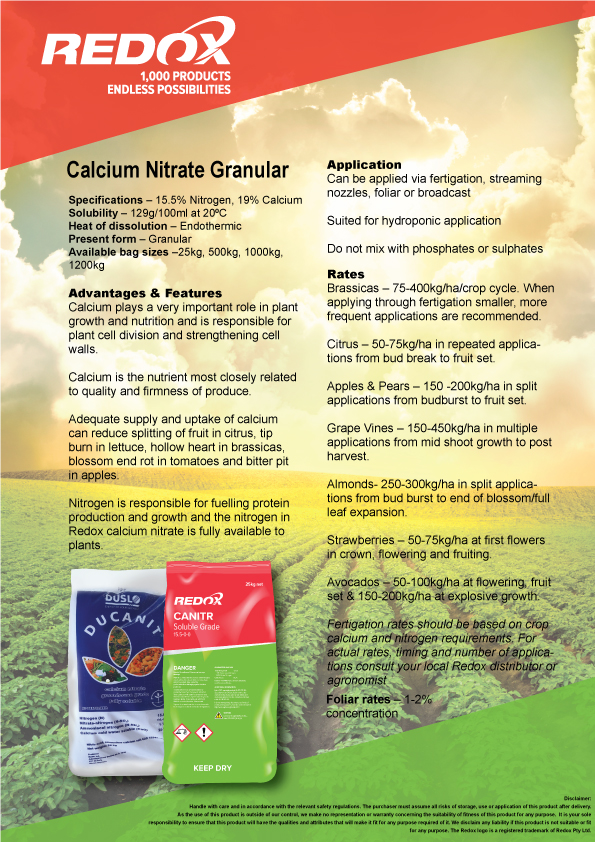Making sure your plants have a healthy balance of nutrients is vital in encouraging good development. Balancing nutrients can be the difference between healthy or dying plants, greater richness of flowers, and more high-quality fruits. But which nutrients do your plants need?
You may have heard of calcium nitrate fertiliser as one source of plant food that is particularly advantageous for crops such as pepper, tomato plants and vegetable crops, but calcium nitrate is also used through fertigation systems around the country to deliver calcium and nitrogen to a wide variety of crops. It is dissolved in fertigation tanks and then applied via a number of methods including sprinklers, drip tapes and streaming nozzles. It is also used on certain crops as a foliar application.
What are the benefits of Calcium nitrate?
A high proportion of calcium in the plant can be found in the cell wall. Calcium is relatively immobile in the plant, and this is why you need to apply it regularly throughout the life of the crop. Do this and you will see improved quality and firmness in your produce. The nitrogen element is specifically responsible for fuelling protein production and leafy growth. Also of importance is the reality that heat and moisture stress can cause calcium deficiencies in certain types of crops, like celery.
Other benefits include:
- Assistance for Calcium – Deficient Plants – Some plants can suffer from calcium deficiencies, especially those in poor quality soils where calcium may be naturally lacking.
- Assistance for Nitrogen – Deficient Plants – Nitrogen deficient plant will display symptoms such as slow growth, and a lack of new shoots appearing.
- Disease Prevention – Blossom end rot, cork spot, and bitter pits in apples can all be prevented or treated with the use of calcium nitrate fertiliser.

Calcium nitrate is a major component in the Hydroponic and soilless media industry. For most growers it’s usually the first product in Tank A and is compatible with Potassium Nitrate, Ammonium Nitrate, Magnesium Nitrate, EDTA/DPTA/EDDHA chelates, kelps, fish emulsions, humic & Fulvic Zcids. It prevails across many sectors, including:
• Vegetables – Brassicas (Coles), tubers, pulse crops, salad greens, potatoes, tomatoes, capsicums, egg plants, zucchini, etc
• Fruit trees – Stone fruit, pome, pip fruit, nut, citrus, tropical fruits
• Vines – Table grapes, viticultural grapes, passion fruit, kiwifruit, cucurbits
• Berry industry – Strawberry, raspberries, blueberries, blackberries, blueberries
• Turf and Golf Courses
• Ornamental – Cut flowers, pot plants, seedlings, potted colour
• Herbs and spices
• Hydroponics
• Avocados
If you are looking for assistance in cell growth balance and fuelling leafy development, Calcium Nitrate could be the answer you have been searching for.
To find out more about Calcium Nitrate, contact one of our industry specialists today